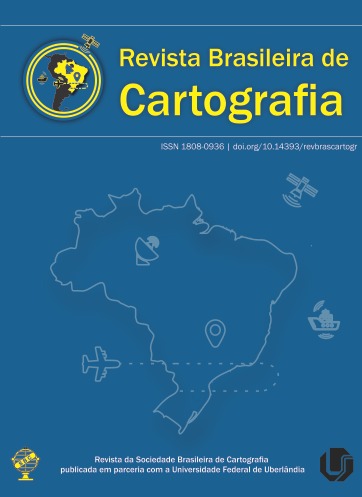Thematic and Conceptual Analysis of Geomorphological Maps: The Graphic Transcription of the Land Surface Complexity
Main Article Content
Abstract
The representations of the land surface, transcribed by geomorphological cartography, raise discussions historically guided by the multiscale complexity of the features and processes linked to the modeling of the surface. Especially since the 1950s, it is considered that a geomorphological map must represent, in an integrated way, information regarding the land surface dimension (morphometry), aspect (morphography), origin (morphogenesis), active processes (morphodynamics) and age (morphochronology). Within the scope of the aforementioned precepts, this study aimed to analyze geomorphological maps of different areas, scales, dates and geomorphological contexts under the theoretical (concepts and assumptions of geomorphological mapping) and thematic (graphical implantation and construction of the legend). 57 geomorphological maps were analyzed, categorized into: national mappings, regions (specific areas) and states in Brazil. Thematic variables were adopted as the criterion for thematic analysis, within the scope of graphic semiology, for each potentially mapped elementary geomorphological aspect: morphometry, morphography, morphogenesis, morphodynamics and morphochronology. The results showed that national maps have sophisticated legend systems, maps of regions meet specialized demands and state maps prioritize the mapping of large morphographic units. 56% of the analyzed maps represented all the required geomorphological aspects, although some implicitly. Individually, morphogenesis (61.4%) and morphography (52.6%) were the aspects most emphasized in the analyzed maps. Finally, it is concluded that the multiscalar temporal-spatial and theoretical-methodological conceptions intrinsic to the mappings, in addition to the characteristics of the local land surface, are factors that hinder standardization and replication of the legends.
Downloads
Metrics
Article Details
Authors who publish in this journal agree to the following terms:
- Authors retain copyright and grant the journal right of first publication with the work simultaneously licensed under a Creative Commons Attribution License that allows others to share the work with an acknowledgment of the work's authorship and initial publication in this journal.
- Authors can enter into separate, additional contractual arrangements for the non-exclusive distribution of the journal's published version of the work (e.g., post it to an institutional repository or publish it in a book), with an acknowledgment of its initial publication in this journal.
- Authors are permitted and encouraged to post their work online (e.g., in institutional repositories or on their website) before and during the submission process, as it can lead to productive exchanges, as well as earlier and greater citation of published work (see "The Effect of Open Access").





